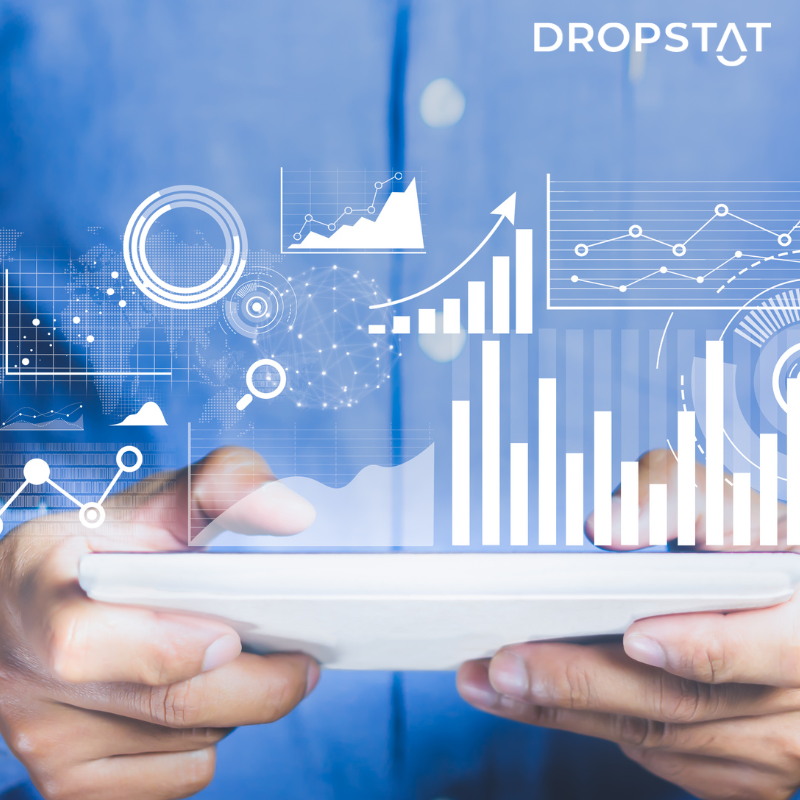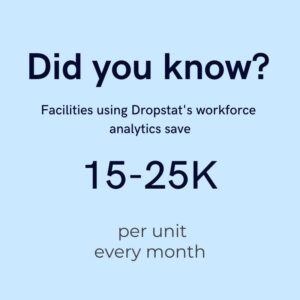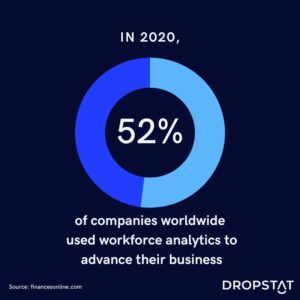5 benefits of workforce planning and analytics in healthcare
Below are some of the main benefits of strategic workforce planning and analytics for every healthcare facility
- Implement training geared toward advancing nurses’ skills
- Predict future gaps in the workforce to ensure safe staffing ratios
- Reduce unnecessary costs by meeting the correct staffing needs
- Increase nurse retention
- Improve nurse engagement
1. Implement training to advance nurses’ skills
While it may seem easier to replace nurses with more qualified ones, instituting advanced training to improve nurses’ skills is a more efficient method of increasing retention and promoting a positive work environment. When healthcare leaders invest in their workforces, nurses feel supported and engaged in the organization, making them more confident in their skills on the job.
Workforce analytics provides a platform to analyze skill levels and training opportunities throughout healthcare facilities. For example, workforce analytics can pick up on a consistent need for specialized NICU nurses during night shifts when your facility has mostly unspecialized RNs. It may be more cost-effective to train the unspecialized nurses with the skills that they are lacking than to hire more specialized ones.
2. Predict future gaps in the workforce – Gap analysis
Predictive workforce analytics uses supply, demand, and gap analysis to understand better facilities’ staffing levels and their ability to meet trends in patient demand and value-based care.
Management decisions are made using data from both ROI and employees to establish a concrete strategy for workforce planning. This reduces the need for last-minute hiring, potential agency use or paying expensive nurse overtime, given that demand is forecasted before heightened patient demands.
Supply analysis requires evaluating a facility’s staff levels and characteristics, such as skill levels, education, etc. This process also estimates the future workforce based on the current rates of retirement, resignation, and termination and calculates how training could affect its future supply.
Demand analysis focuses on competition and labor markets to estimate the organization’s position within the market. Then, these metrics are combined to determine the gap analysis, which calculates the condition of an organization in relation to its predicted demands.
3. Reduce unnecessary costs
Like future workforce predictions, employee and staffing data can provide concrete insight into the allocation of finances. In many cases, facilities may find that they regularly spend on temporary, overtime, or agency staffing which are typically more expensive than permanent staff. This knowledge enables management to make more informed hiring decisions based on demand, skill level, and patterns of overtime and temporary staffing. This data also allows organizations to determine inefficiencies in training and other efforts to decide whether or not they deliver positive results.
4. Increase retention
Workforce retention analytics empowers healthcare facilities to identify and invest in nurses who are more likely to resign. Nurses that are working in the facility already possess the training and knowledge to provide the best patient outcomes, while hiring and onboarding new nurses puts a strain on resources. One method that predictive analytics uses is recognizing characteristics most closely associated with employee turnover to tag individuals who present those behaviors and suggest ideas to assist them. Data metrics can even specify how significant each behavior or characteristic is in determining nurse turnover while categorizing employees based on their likelihood of retention/resignation.
5. Increase engagement
Employee engagement analytics focuses on nurses’ commitment to their facility and assesses how devoted they are to their patient outcomes. Engagement is a key factor in recognizing productivity and retention and is linked to ROI and other organizational performance metrics. Evaluating engagement alongside other employee traits, such as job satisfaction, allows healthcare managers to compare attributes of high-performing nurses with nurses who may need more support.
Why use Dropstat as your workforce analytics software?
Dropstat has workforce analytics integrated into its platform using AI technology to measure engagement, retention, and valuable training opportunities, as well as predict future workforce demand within each healthcare
facility.
Each facility’s employees are tagged according to skill level/training while tracking overtime and engagement on the platform, which makes it easy to incorporate it into existing processes. Dropstat’s technology already includes the integral components of these analyses for workforce planning, making it highly specific to the demands and challenges of healthcare facilities.
While some software is designed to track metrics specific to technology or retail industries, Dropstat can gather insight into agency or temporary staffing, which would otherwise not be considered. These analytics are fundamental in reducing unnecessary costs and increasing staffing efficiency. Ultimately, workforce analytics makes long-term planning and evaluation possible for organizations that want to examine whether their current operations produce valuable results.
A case study of Dropstat’s workforce analytics
Dropstat’s workforce analytics has enabled many healthcare organizations to optimize their operations. One client, in particular, has reduced their costs in bonus usage from $112,000 per month to just $1,950 after implementing Dropstat’s overtime and bonus tracking. In addition to cost allocation, the client participated in Dropstat’s embedded best practices, which involve posting shifts 30 days before the start date, as well as adhering to the bonus policies that are modified to the demands of each facility.








